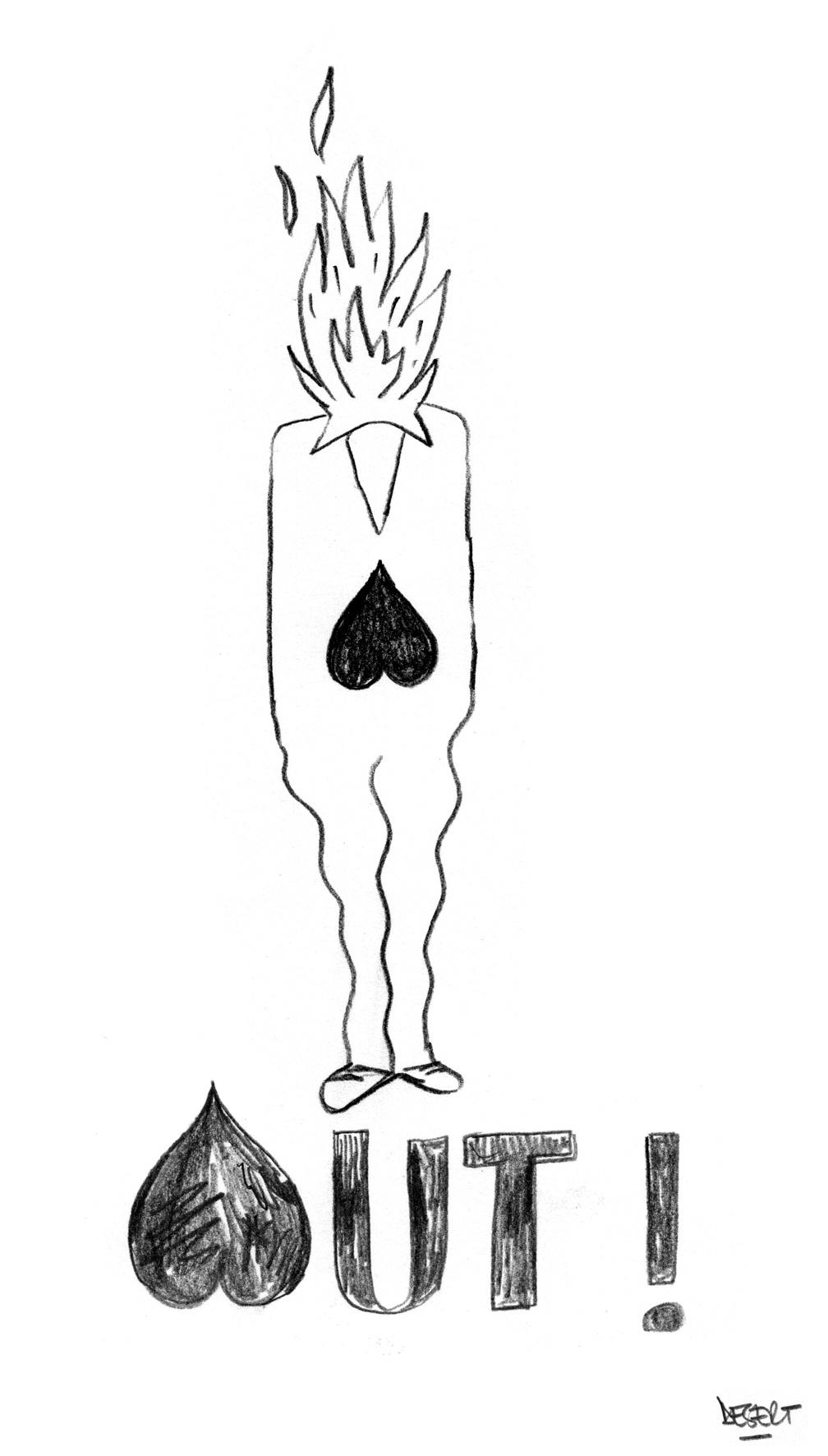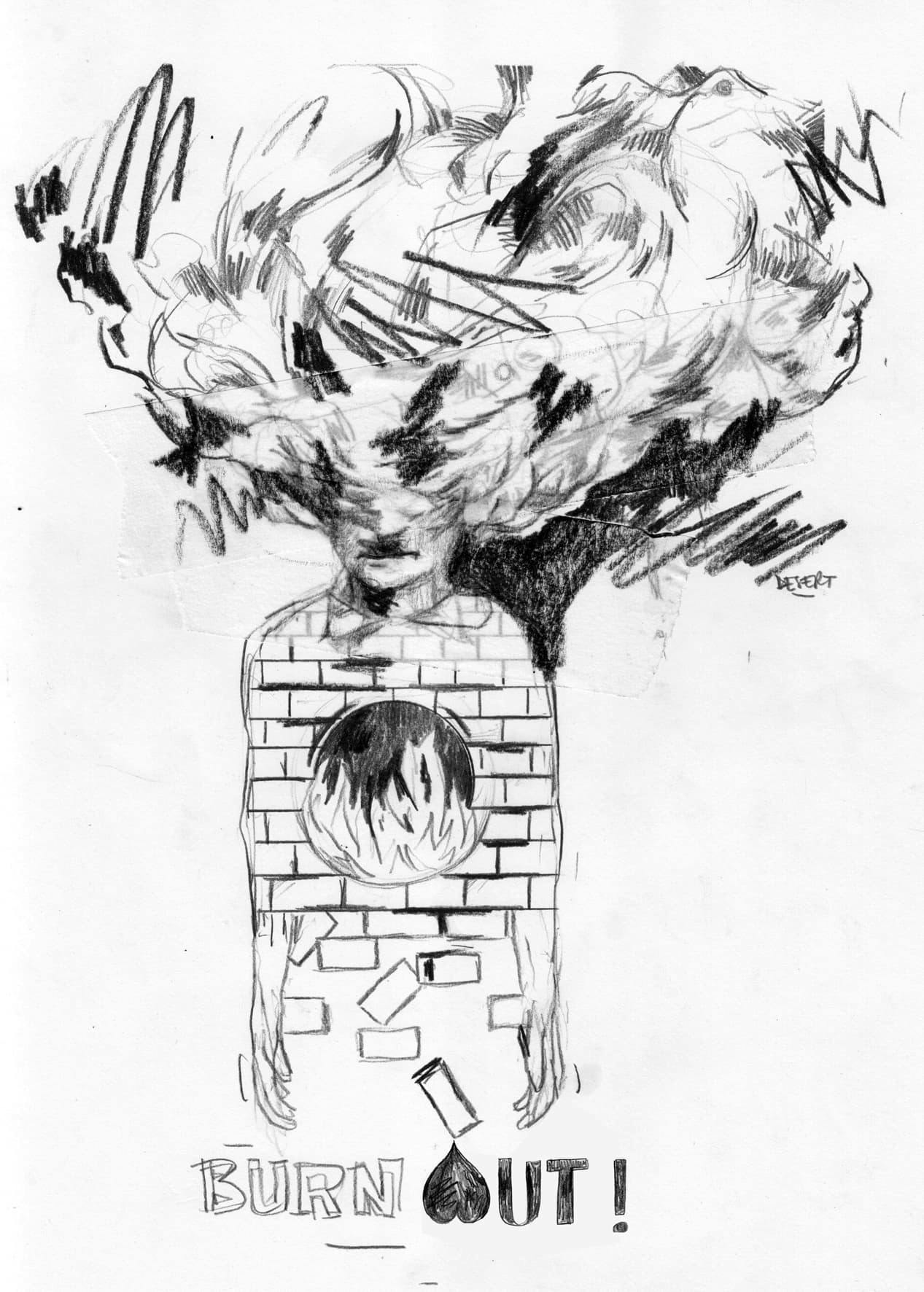
Burnout : the wake-up call that changes everything
EIt's not your fault: discover how burnout reveals the flaws in our society and pushes us to act together
May 2025



May 2025

Managing a team is based on principles, but also on methods. Put this way, it seems simple — almost obvious. In fact, everyone seems to have an opinion on the matter. Let's take an example: the day after a poor performance by the Red Devils, literally millions of self-proclaimed coaches are speaking out. Ten million experts, convinced that they would have "done better than the coach".
Social networks are full of sharp judgments:
And I'll admit that I've also often wondered what Domenico Tedesco and Rudy Garcia were doing when our team was skating on the field — those moments when everything seems frozen, when every pass seems heavy, every decision is contested. Worse, I remember exclaiming that I could have scored this goal because it seemed so unmissable (even after having played more in the playground than on a football field). Then, the second of the liberating goal, all is suddenly forgiven... and above all forgotten.
These reactions, between frustration and spontaneous expertise, illustrate a universal temptation: to believe that leading a team is above all common sense. but also a science.
The management of a team — whether it is sporting, organizational or managerial — is not just a matter of intuitions or a few miracle recipes. Management science, social psychology, sociology of organizations, and leadership research have accumulated decades of work to understand what really influences a team's performance and health.

This simplification phenomenon is common, for example the recency bias which consists of giving excessive importance to the most recent events, to the detriment of the whole situation. Thus, the last impression dominates our judgment: a liberating goal instantly erases 89 minutes of mediocre play. There is also the overconfidence bias that leads everyone to overestimate their own skills and believe that they would do better than the decision-maker in place. Combined with theDunning-Kruger effect, it makes us forget the complexity of the role of leader and feeds the illusion that everything seems simple... when you don't have to decide for yourself.

The case of football can make you smile. However, behind the sporting anecdote lies a much broader reality: anyone in a position of responsibility faces the same phenomenon. As soon as a decision is made — whether it likes it or not — comments are pouring in. In the company, in the administration or in the life of associations, everyone has a say in "what should have been done", often without measuring the complexity of the role.
The RTBF programme Investigation, broadcast in October 2025 and entitled Le blues des bourgmestres, perfectly illustrated this pressure. In it, Belgian mayors recounted the fatigue, the constant criticism and sometimes the direct threats they face. Some receive insults on social networks, others worrying messages at home. More than one in ten, according to the report, ended up throwing in the towel before the end of their term, discouraged by the symbolic violence and loneliness of the role.
This observation goes beyond local politics: in many organizations, positions of responsibility are no longer the stuff of dreams. How many executives, team leaders or project managers today refuse to take on a hierarchical function? The reasons come up over and over again: "more stress", "no more conflicts", "no more recognition or salary". What once symbolized a promotion or a mark of trust, is now perceived as an overload, even a punishment.
This development is not insignificant. In my opinion, it reflects a collective negligence: that of believing that team management is learned "on the job", that it is only a matter of character or common sense, but managing is a real profession, with its tools, its processes, and even its share of science. There are simple — not simplistic — ways to deal with complex realities: deciding, motivating, arbitrating, making sense, managing tensions, maintaining cohesion and performance without exhausting individuals.

Thinking about the management of a team means touching on something broader: the way we conceive the link between performance and health, between individuals and collectives, between work and responsibility.
Before we dive into the models and concepts, let's take a moment to ask ourselves a few questions.
I do not provide a single answer to these questions — they deserve to be debated, shared and discussed within your teams.

Research shows that while personal factors matter, organizational factors represent the majority of causes: overload, lack of autonomy, insufficient recognition, conflicts of values, collapse of the work collective, etc. so many signals of systems running out of steam.
In other words, burnout is not just a matter of individuals, but of work structures and cultures. It is therefore at the level of the organization and the teams that it happens.
Preventing burnout is therefore not (only) asking people for even more resilience. It means rethinking the ecosystem in which they operate.
My belief is simple: individual health and team health go hand in hand.
Imagine the following situation: you join a company or organization that resonates with your values, where you get along well with others, where you can use your skills, learn and grow — all with a fair and consistent salary. And, depending on your personality, you will find either the right amount of challenge or a reassuring stability in your rhythm and work schedule.
Such an environment not only promotes your personal development, but also has a direct impact on your health, your motivation and, through a ripple effect, on the overall performance of the team.
By the absurd, a team cannot be efficient if its members are tired, disengaged or losing meaning, and conversely, a dysfunctional collective always ends up weakening those who are part of it. A defeat on Friday night against North Macedonia makes it more difficult for the team to prepare for Wales three days later.
But it is not so much the events (win/defeat) that weaken the team the most, what weakens the collective performance the most, it is for example the team toxins: criticism, systematic defense, evasion or contempt. These behaviours – often unconscious – poison the quality of the relationship and clog up the wheels of cooperation. When they take hold, trust crumbles, exchanges become sterile, creativity freezes, and decisions lose clarity. In too high a dose, these toxins stifle the dynamics of the system, like a clogged engine that ends up stalling. A successful team is therefore not one that never knows tensions, but one that knows how to recognize its toxins, talk about them, and consciously cultivate their antidotes: listening, shared responsibility, recognition and also... humor.
It is this balance that good leaders bring to teams. Because in general people are competent. It is the quality of the system that we create that makes the difference.
Being repeatedly exposed to relational toxins does not only affect the work climate: it also has a direct impact on physical and psychological health. The chronic stress generated by mistrust, fear of judgment or the feeling of injustice continuously activates the body's defense mechanisms: muscle tension, nervous fatigue, sleep disorders, irritability, even burnout. In the long run, the immune system weakens, motivation erodes and the joy of collaboration disappears. In other words, relational toxins act as a slow poison that undermines both individual vitality and collective performance.
So, how do you build healthy teams in an organization that wants to both function well and deliver results? How can you achieve this if your environment is always asking you for more?

In this context, the health of teams becomes a strategic lever: it conditions sustainable performance, the quality of the social climate, the retention of talent and contributes to the good health of individuals.
In this context, we could (re)say that "work,... it's health," and I would add "under certain conditions."
A healthy team is much more than an effective group.
It's a space where people feel supported, respected, and sometimes even a little transformed by what they experience together. Yes, it may sound idealistic. And yet, this is what distinguishes a successful team from a lively one.
This makes these teams much better able to use their collective intelligence to solve complex problems – which is now becoming one of the biggest challenges for all organizations, regardless of size or industry.

The idea is to take the pulse of your team, as it is perceived by those who keep it alive on a daily basis.
This test measures 3 factors related to the health of the team:
Questionnaire
Answer these 12 statements grouped into three.
Each statement is rated on a scale of 1 to 7:1 = strongly disagree7 = strongly agree
Once the answers have been collected, the average of the team can be calculated. This aggregation makes it possible to obtain a collective score.
Factor 1 - Psychological Health
It assesses the way in which basic psychological needs are met in the team: freedom, competence, bonding, security.
Article
Proposed wording
1 I feel free to express my ideas in my team, even when they differ from those of others.
2 I feel that I have the skills to contribute effectively to our collective work.
3 I feel accepted and supported by my team members.
4 I can learn from my mistakes without fear of being judged.
🔎 Inspired by Ryan & Deci (2017), Edmondson (1999), Chen et al. (2015)
Factor 2 - Relationship Health
It focuses on the quality of interactions and the way in which the collective works. In other words, the relational fabric of the team.
Article
Proposed wording
5 The members of this team trust each other.
6 Decisions are made in a fair and transparent manner.
7 Differences of opinion are dealt with constructively.
8 There is real mutual support between the members of this team.
🔎 I inspired Costa & Anderson (2011), Colquitt (2001), West (2012)
Factor 3 — Existential/Moral Health
It explores the deepest dimension: meaning, the coherence of values, and the perception of a useful contribution.
Article
Proposed wording
9 The work of our team has a clear and useful meaning.
10 The values of this team are in line with mine.
11 I feel proud to be part of this team.
12 Our team contributes positively to something larger than ourselves.
🔎 Inspired by Steger et al. (2012), Lips-Wiersma & Morris (2009), Frankl (1959)
Rating and interpretation
The overall score corresponds to the average of the 12 items (out of 7 points).
Average score
Interpretation
> 6 Very healthy team – strong collective well-being
5 to 6 Good balance, to be maintained
4 to 5 Latent tensions, vigilance recommended
< 4 Risk of collective dysfunction
This diagnosis is not a verdict. It's a starting point, an opportunity to open up the conversation about what's going well and what deserves attention. Numbers, here, do not replace words: they provoke them, direct them.
So, before you try to "fix" anything, start by listening. Look at where your team feels strong, where they feel vulnerable. And above all, let each member make sense of it.

Because before talking about performance, we have to talk about energy. An exhausted team can still hold out for a while... but it no longer creates, no longer connects, no longer breathes.
Finally, here is a list of good managerial reflexes to prevent burnout and strengthen team vitality
1. Maintain rhythm and balance
2. Cultivate psychological safety
3. Give meaning to work
4. Practice recognition on a daily basis
5. Manage tensions as soon as they arise
6. Share power and responsibilities
7. Celebrate successes

Of course, it is not possible to put all this in place if you are experiencing burnout and loss of meaning.
Organizations have a major role to play. But if you yourself are exhausted, a path of transformation is possible.
Explore the key steps to get out of it and see how to support your loved ones on this path.
Read more:
How to get out of it on an individual level if you are in the case?
Connecting to the best of each other: "relationships make the difference"
Managing change: "interrelationships make the difference"
Creating high-performing teams: "Structure and quality of leadership make the difference"

Did you like this article?

EIt's not your fault: discover how burnout reveals the flaws in our society and pushes us to act together
May 2025


Burnout is rising worldwide. From Gallup to McKinsey, discover what the data — and the lack of it in Luxembourg — really reveals about workplace stress.
May 2025


Beyond the numbers: definition of burnout, symptoms vs. boreout, and lived experiences to spot risks early and avoid collapse.
May 2025
